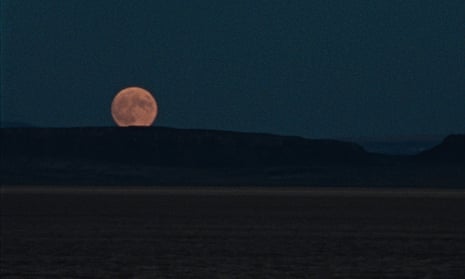It only takes eight minutes of To the Moon before we hear the ripples of Debussy’s Clair de Lune, over a gorgeous vintage montage of embracing lovers. It’s the equivalent of Pomp and Circumstance at the Proms for Tadhg O’Sullivan’s beautifully succinct visual essay on the little guy in the sky; the moon’s beguiling apartness exerting a constant pull on our emotional and imaginative lives, paradoxically making it an inseparable part of us. As the opening quotation, from a Jennifer Elise Foerster poem, puts it: “Moon / Earth fragment / Remember us.”
Appropriately, given the presiding deity here and its remit of the unconscious, O’Sullivan’s film is an estuarial wash of lunar-related images, sound and text – all the better to percolate straight into us. Beginning with limpid shots of the rising and setting moon, its impressively broad set of purpose-shot and archive footage – including films from 25 countries, including ones by Satyajit Ray, FW Murnau and Carl Theodor Dreyer – confirms the moon’s universal allure.
Broken down into sections according to lunar phases, the structure is perfectly clear but still has suggestive leeway. Sometimes the presiding theme is obvious, as with the romance and madness segments in the film’s “waning” first half. Sometimes an abstract state of being seems to hold sway, as in the deathly, senescent preoccupations in the “new moon” chapter. Later, there’s a charming little digression with kids speculating about who might live up there; a family with red noses burnt by the sun, says one.
O’Sullivan makes a sort of political statement in To the Moon’s penultimate “gibbous” section, positioning space exploration as a late step in a broader history of colonialism, at which point “the sovereignty of the moon had dissolved”. But it feels a bit lightweight and summarised, earthbound next to the almost hypnotic tide of more fundamental undercurrents elsewhere – a powerful nocturne hymning the moon’s pull on our bodies and minds. Maybe O’Sullivan should do a film for every planet and start his own cinematic universe.
